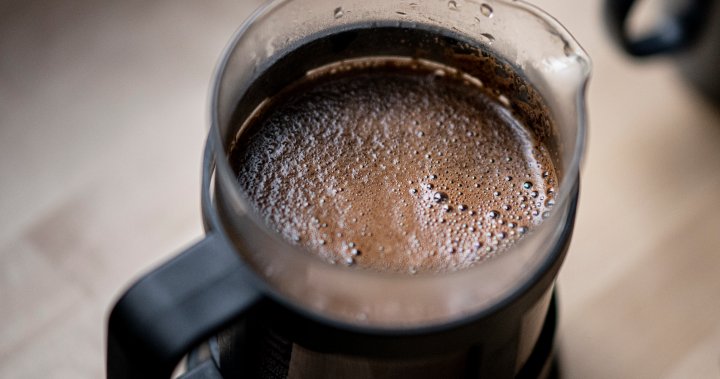
Coffee could soon cost more at grocery stores and cafes. Here’s why
Global News
Here's a look at some factors that could determine whether people will be paying more for their morning jolt in the near future.
As if a cup of coffee wasn’t expensive enough, a confluence of factors is driving up farmers’ costs to grow the beans and it could begin filtering down to your local cafe before the end of the year.
After hovering for years near $1 per pound, coffee futures — the price large-volume buyers agree to pay for coffee upon delivery months down the road — doubled in late July, reaching heights not seen since 2014. Though prices have eased a bit, they remain elevated at about $1.90 per pound.
Coffee lovers already paying $8 or more for a bag in the supermarket or up to $5 for a cup may despair over even-higher prices, but a spike in coffee prices on the international futures market doesn’t always trickle down to the consumer.
Here’s a look at some factors that could determine whether Americans will be paying more for their morning jolt in the near future.
A sustained drought followed by two July frosts blew a hole in Brazil’s coffee output, immediately sending wholesale prices for the popular Arabica bean to more than $2 per pound. The frost will significantly affect the 2022-23 harvest, said Carlos Mera, who analyzes the coffee markets at Rabobank.
The Brazil frosts followed COVID-related supply chain snarls, a dearth of shipping containers, labor shortages and other production hiccups. Add in rising costs for virtually everything and you have a bitter cup brewing for coffee drinkers.
“This is unprecedented,” said Alexis Rubinstein, the managing editor of Coffee & Cocoa for commodities brokerage StoneX Group. “It’s never been this perfect storm before. It’s usually just been a supply-and-demand scenario.
“We’ve never been dealing with a supply and demand issue on top of a logistics issue, on top of labor issues, on top of a global pandemic.”











